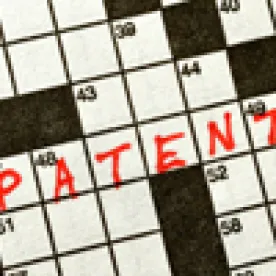Takeaway: Obviousness, as a determination of unpatentability, is not a question of commercial viability as a practical business determination.
In its Final Written Decision, the Board found that Petitioner had demonstrated by a preponderance of the evidence that claims 4, 9-17, 21, and 26-38 of the ’917 patent are unpatentable. Claims 4, 9-17, 21, and 26-38 were the only challenged claims.
The ’917 patent relates to “a vehicle including various sensors that monitor vital signs and production-related parameters of the vehicle.” The list of vital sign sensors in the ’917 patent include sensors that detect engine oil temperature, engine coolant level, a crash, and tire air pressure. The list of production-related sensors in the ’917 patent include sensors that determine engine revolutions per minute (RPM), throttle position, and engine fuel consumption.
The Board initially found that no particular claim term required an express construction. Moreover, the Board pointed out that no material claim construction proposed by either party was in dispute. The Board noted in particular that “although Petitioner initially proposed construing ‘a load on the engine’ as ‘any condition or parameter placing a demand on the engine that is affecting the amount of work done by the engine’ . . . both Petitioner and Patent Owner agree . . . that engine fuel consumption rate is an example of ‘a load on the engine.’”
The Board then went on to analyze Petitioner’s assertion that claims 4, 9-17, 21, and 26-34 would have been obvious under 35 U.S.C. § 103 in view of Aoyanagi, Steiner, and Oishi, and ended up agreeing with Petitioner. Of particular note, the Board did not find the testimony of Patent Owner’s expert, Mr. Nranian, “that one skilled in the art would have understood the trade-off between storing more data with additional memory and the cost of the memory” to be persuasive. Instead, the Board cited the case of Orthopedic Equip. Co. v. United States, 702 F.2d 1005, 1013 (Fed. Cir. 1983), for the proposition that “the fact that . . . two [prior art disclosures] would not be combined by businessmen for economic reasons is not the same as saying that it could not be done because skilled persons in the art felt that there was some technological incompatibility that prevented their combination. Only the latter fact is telling on the issue of nonobviousness.”
The Board went on to state that “additional memory does not appear to be anything more than a cost consideration, and Patent Owner’s expert, Mr. Nranian, testified that one skilled in the art would have understood the trade-off between storing more data with additional memory and the cost of the memory.” Thus, the Board was not persuaded “that one skilled in the art would not have considered including engine load data in Aoyanagi’s system because of the cost of the alleged additional memory requirement.” The Board was instead persuaded “that one skilled in the art would have combined Steiner’s teachings with Aoyanagi’s system for the reasons set forth by Petitioner, noted above, which Patent Owner does not challenge specifically.”
Toyota Motor Corp. v. Leroy G. Hagenbuch, IPR2013-00638
Paper 42: Final Written Decision
Dated: January 30, 2015
Patent: 8,014,917 B2
Before: Jameson Lee, Michael W. Kim, and Jeremy M. Plenzler
Written by: Plenzler
Related Proceedings: Hagenbuch v. Toyota Motor Sales, U.S.A., Inc., No.1:13-cv-6713 (N.D. Ill., filed Sept. 18, 2013); Toyota Motor Corp. v. Leroy G. Hagenbuch, Case IPR2013-00483 (PTAB Dec. 5, 2014) (determining that claims 1-3, 5-8, 18-20, and 22-25 of the ‘917 patent are unpatentable)



 />i
/>i

